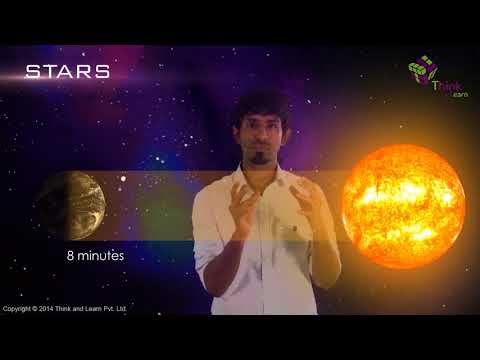You might have come across the word heavenly body in your science textbook sometime or the other. Have you ever wondered what are heavenly bodies? Celestial bodies or heavenly bodies are objects in space such as the sun, moon, planets, and stars. They form a part of the vast universe we live in and are usually very far from us. The glorious night sky is dotted with such objects and when we observe them using a telescope, they reveal fascinating worlds of their own. Because they are so far away, we cannot see all of them using the naked eye and we rely upon telescopes to study them.
Hence, we can define heavenly bodies as,
A planet, moon, star or other natural objects in the space
In this short piece of article, let us discuss various heavenly body names and their meaning.
Classification of Celestial Bodies

Stars
Stars are giant balls of hot gases that can produce their own light. Stars give out energy by converting Hydrogen gas into Helium in their cores. Stars are gigantic in size and have an immense gravitational attraction. The sun is a medium-sized star that gives us energy and makes life possible on earth.

Planets
Planets are large (almost) spherical objects that revolve around the sun. Planets move in fixed orbits around the sun. There are 8 planets in our solar system. Planets may be made of rocks, metals and gases like hydrogen, nitrogen and methane. The earth is also a planet and is the only known place in the universe which supports life. Planets that revolve around other stars are called exoplanets.
Satellites
Satellites are objects that revolve around planets. They form the essential part of the celestial bodies. These may be of natural origin or sent by humans. The moon is a natural satellite of the earth and revolves around it because it is bound by the Earth’s gravitational pull. Man has also placed artificial or man-made satellites around the earth and other planets to study them and for communication purposes.
Comets
These are small chunks of ice and rock that come from the outer edge of the solar system. When its orbit brings it closer to the sun, the ice on them vaporizes, creating a beautiful tail behind them.
Asteroids
These are small irregularly shaped rocks made up of metal or minerals that orbit the sun. Most of them are found between Mars and Jupiter in an area known as the asteroid belt.
Meteors and meteorites
These are objects from space that enter our atmosphere as they are pulled by the earth’s gravity. Meteors usually are small and burn up in the atmosphere as they enter the earth. This creates streaks in the sky as though a star has fallen. They are commonly called shooting stars. If a meteor is large enough it can reach the ground and create a crater. Such objects are called meteorites.
Galaxies
Galaxies are large groups of stars held together by gravity. The sun and the solar system is part of a galaxy known as the Milky Way. Other galaxies are usually so far away that they look like stars in the night sky. The Andromeda galaxy and the Large Magellanic Cloud are galaxies that can be seen with the naked eye on a clear night.
The next time you go out to wonder at the night sky, try to identify these objects. If you can get a star chart, use it to find the different celestial objects mentioned in the night sky.
To know more about solar system, stay tuned with BYJU’S – The learning app!




Astronomically certain events on earth,seem to synchronise with certain celestial event.for example,the annual flooding of the nile follows closely the appearance of sirius,the tides ebbed & flows in phase with the moon,the change of the seasons follows closely the movement of the sun.
It is very good!
I have the premium app.